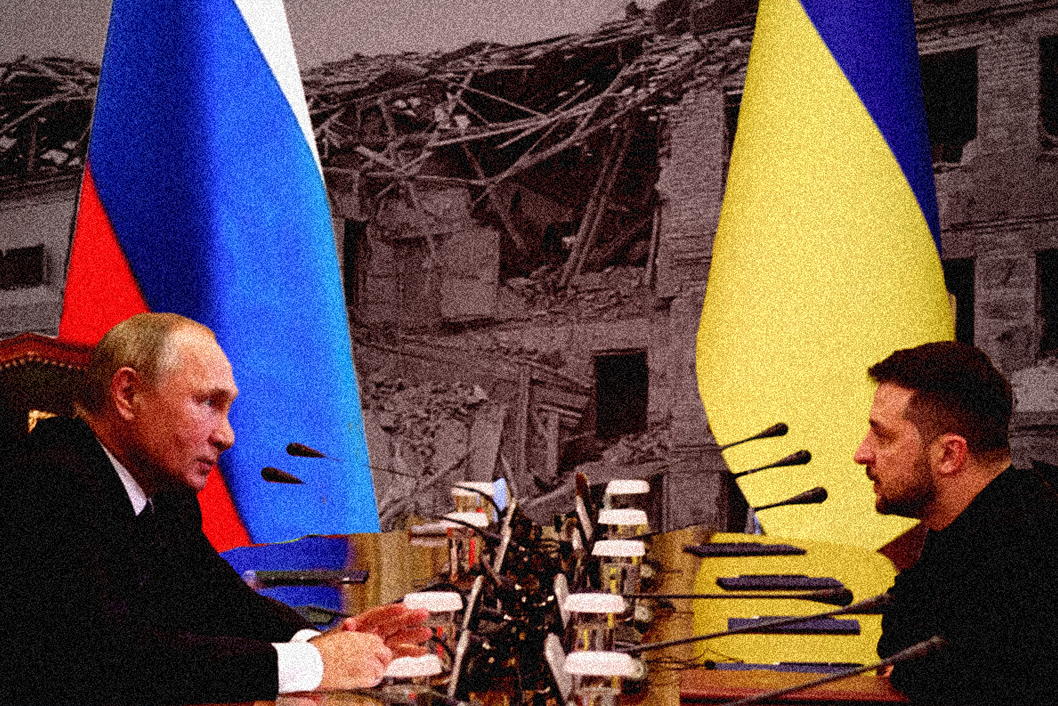The failure of Ukraine’s counter-offensive has brought to the fore all the contradictions in the Ukrainian war effort. Disaffection is spreading in the army and among civilians, while at the same time Ukraine’s western allies are getting cold feet and starting to talk about negotiations.
Since late last year, the news has been full of noise about the coming Ukrainian counter-offensive. After their successes in late summer and autumn last year, there was a hope that western weapons would deliver another swift advance for the Ukrainian army that would force the Russians to negotiate on Ukraine’s terms.
The start of the offensive kept being delayed and delayed. The Ukrainian army was waiting for western weapons and training, which were slow in arriving. The Russians, in the meantime, were preparing their defences. The Ukrainians and their western allies made no secret about where they would strike, so in the end the Russians were able to dig in and prepare themselves for what was to come.
The beginning of the offensive wound up looking a lot like Russia’s winter offensive: scores of tanks stuck in minefields, being bombarded by artillery, drones and other missiles. The opening salvo was a disaster. The western vehicles were no silver bullet, capable of riding through a hail of shells or a sea of mines. The western-trained and equipped brigades lost what the Economist euphemistically described as an “uncomfortable number of men and equipment”.
The Russian army had adapted well, with $500 kamikaze drones being used to disable or blow up million-dollar tanks. All the tactics that the Ukrainians used so effectively against the Russian army in the first part of the war were now being used against the Ukrainians, with a few additional innovations.
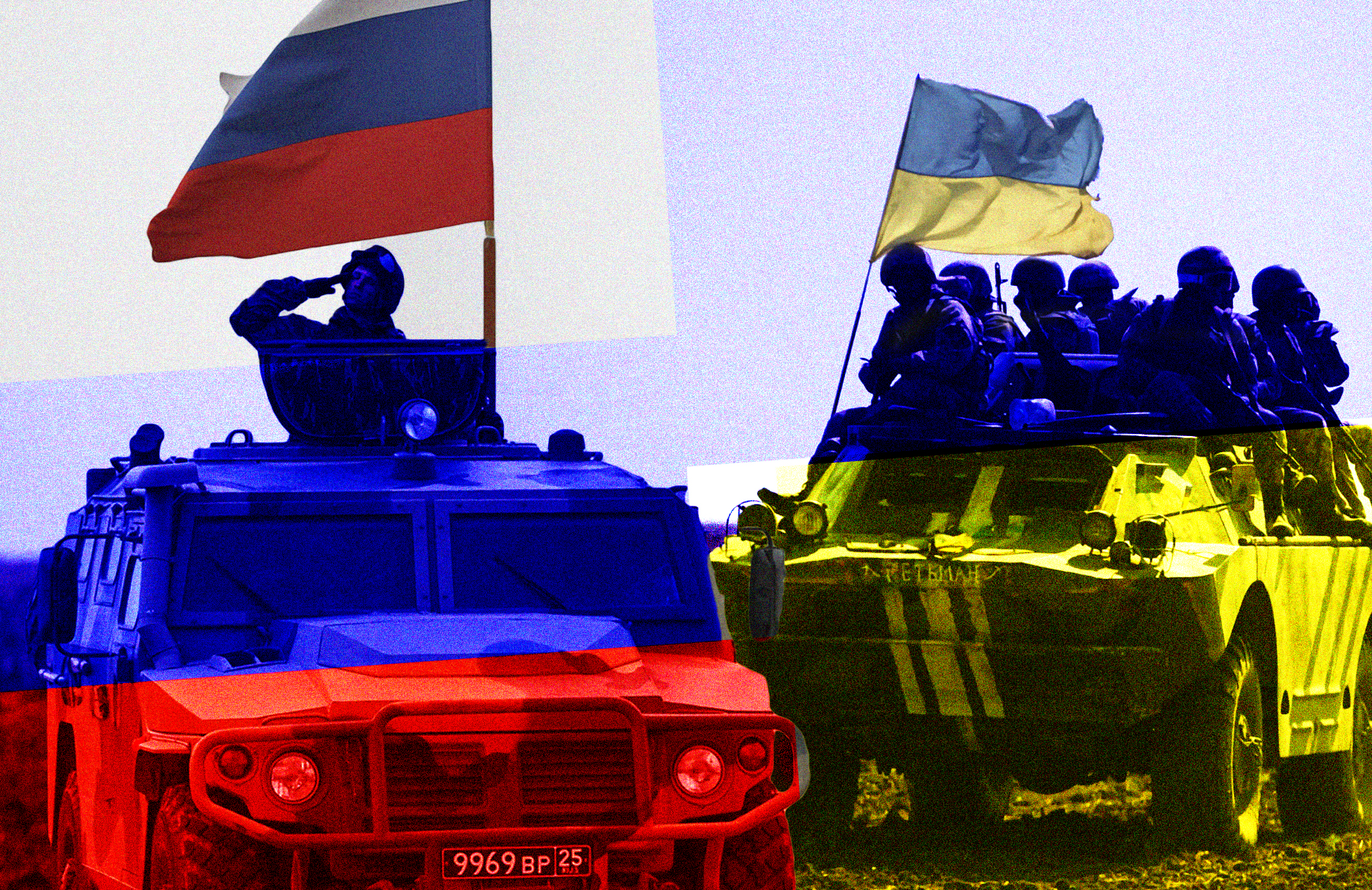 The Ukrainian counter-offensive was promised for months, but was delayed whilst the Ukrainians waited for western weapons. Meanwhile, the Russians dug in and fortified their position / Image: In Defence of Marxism
The Ukrainian counter-offensive was promised for months, but was delayed whilst the Ukrainians waited for western weapons. Meanwhile, the Russians dug in and fortified their position / Image: In Defence of Marxism
And unlike last summer, the ranks of the Russian army had additionally been filled with hundreds of thousands of new recruits and conscripts. Their level of training and morale would not be up to that of the troops that lost in the first period of the war, but it was clearly sufficient to withstand the Ukrainian offensive.
This provoked a change of tactics from the Ukrainian army. They abandoned some of the western methods of fighting, advancing in brigades of massed infantry and armour, with some arguing it was madness to try them in the first place, given the lack of air superiority.
Instead of a frontal assault, they opted for the tactics that have become the signature of the Donbass front: massive artillery duels, interspersed with occasional probing by infantry. The aim is not so much the capture of land, but to wear down the enemy.
They have had some slight successes, managing to reach the first line of Russian defence near Robotyne, but it has been minimal and has required the Ukrainian military to engage all of its available forces, including the last remaining uncommitted western-trained brigade, the 82nd. And the latest news is that they’re attempting to move troops from the Bakhmut front to the South after advice from western generals. But moving troops from one front to another will merely allow the Russian army to reciprocate, should they feel the need to.
Hypothetically, if Ukraine could secure a continuous supply of troops, ammunition and equipment, the tactic they have embarked on might be capable, over the next year or two, of wearing down the Russian defences enough to eventually break through, but the price they have paid for these small gains is already too high.
The whole idea of throwing waves and waves of soldiers across heavily mined and fortified open terrain, under the watchful eyes of Russian drones, just shows the callousness of both the West and the Ukrainian leadership. It wasn’t so much an offensive as a massacre.
The macabre news came in this week that the planned National War Memorial Cemetery will cover 266 hectares of land, ever so slightly bigger than the Arlington Cemetery in Washington DC, which houses 400,000 dead US soldiers. There are already graves from World War II on this site outside of Kiev, but nonetheless it shows something of the scale of the casualties the war has already caused.
The whole thing, including the fact that western generals are now trying to direct the war through the Western media, smacks of desperation. The Ukrainian leadership and their most hawkish allies in the West needed something to show from this offensive for the massive amount of money and lives being thrown away in this war. They needed to justify further mobilisations and more war material, but it was not to be.
Cracks opening up
In Ukraine, the failure of the counter-offensive has revealed the first serious signs of war-weariness. Divisions are reportedly emerging between the President’s office and the military about whether to continue the offensive or break it off and prepare for the expected Russian one.
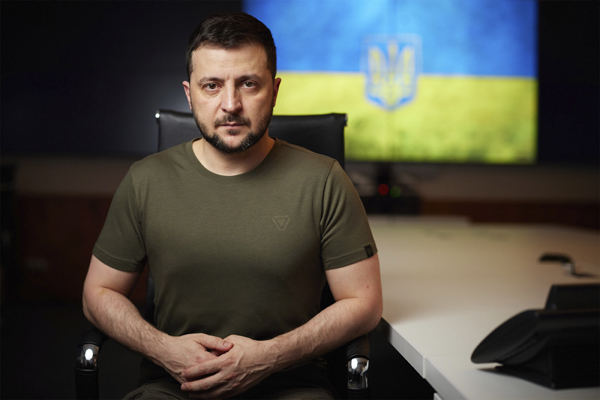 The failure of the counter-offensive has brought out the first serious signs of war weariness on the side of Ukraine, and anger over recruitment practices / Image: www.president.gov.ua
The failure of the counter-offensive has brought out the first serious signs of war weariness on the side of Ukraine, and anger over recruitment practices / Image: www.president.gov.ua
Discontent with the first phase of the offensive is coming continually into the open: “I lost a lot,” a western-trained career officer explained to The New York Times, “and some of the new guys are mentally broken.” Of less concern to him than losses of equipment is the loss of soldiers. Pro-Ukrainian military bloggers, including acting military personnel, have publicly criticised their commanders for incompetence and failing to understand the importance of morale.
There was little appetite for continuing on the road that the West was pushing. The army is being pushed to its limits. The more seasoned commanders have seen their units decimated. In the Kherson offensive last year, some were replacing members of their units as many as three times.
The President’s spokesman even commented that “this isn’t a horse you can whip to go faster. Every metre forward has its price in blood.”
The Economist also quotes the head of a volunteer organisation:
“‘It makes the air so thick that you can actually feel it,’ says Ms Zamula. Everyone knows that the cost of regained territory is dead soldiers. ‘Even hoping for success in the counter-offensive has become an act of self-destruction.’”
Serious strains are being felt across the population. Those that wanted to join the army voluntarily have long since dried up, and now conscription agents are feared throughout the country.
Those that are enlisted can expect a minimal amount of training before finding themselves on the front lines. The Guardian interviewed a factory owner earlier this month who related a story:
“I met a guy who told me he was taken from the street and within a week his unit was starting to attack a village near Bakhmut. And he told me ‘What the fuck – it is the first time I picked up a rifle and after a week I go to attack this village’. He was shot twice, once in the arm and once in the back.”
He was complaining that workers didn’t turn up to work for fear of conscription: “There are two categories of people – one is already in the army and the other is too scared to go outside so as not to be conscripted, and no salary will make them leave their houses.”
The Guardian continues:
“The country’s political leadership said it recognised the mobilisation process was difficult, and wants to avoid excess zeal in recruitment, but said Ukraine had little choice but to continue conscription if the army is to stand up to Russia, which has mobilised hundreds of thousands of men since the start of the war.”
The tensions have led to the revelations of a massive scandal in recruitment. Zelensky fired all regional conscription heads after it came to light that schemes had operated whereby a payment of between $1,500 and $5,000 would get you out of military service. The most advanced of these schemes involved being sent for a fake MRI scan at a hospital, complete with a doctors’ certificate. Given that the minimum wage in Ukraine is $180/month, such a recourse is ruled out for most Ukrainians.
The increased mobilisation is bringing to the fore class contradictions. Videos are circulating with Ukrainians saying that peace would arrive quickly if they started conscripting the sons of the rich.
The Economist sums up the situation:
“‘We simply don’t have the resources to do the frontal attacks that the West is imploring us to do,’ says the source in the general staff. Those keen to fight volunteered long ago; Ukraine is now recruiting mostly among the unwilling. The grim mood is spilling over into Ukraine’s politics. The public mood is sombre. Criticism of Volodymyr Zelensky, the president, has increased, and the reasons for the dissatisfaction are clear.”
The Ukrainian government, previously keen to get western journalists to the front lines to report on successes, is now being forced to bar journalists. Clearly, the latest round of reporting from Forbes, Bild and New York Times was not what they had in mind.
Now, Zelensky has announced another wave of mobilisations, hoping that his cleanup of the recruitment offices will yield better results, but the political situation is deteriorating, as Ukrainian news website Strana, points out:
“Even if there are no major upheavals and destabilisation, if the war drags on, the threat of ‘passive demoralisation’ of society increases, which may also affect the course of hostilities (e.g. through increasing evasion of mobilisation).”
Limitations of material
Unlike Russia, Ukraine is dependent on the West for its supplies, and the willingness of the West to continue to supply arms is wearing thin, as politicians have little to show for the billions already spent.
For the Ukrainians, preserving manpower, and limiting the steady stream of casualties is of primary importance, but for the West, the calculation is quite different. Soldiers – that’s for Ukraine to provide; equipment and ammunition – that’s for the West.
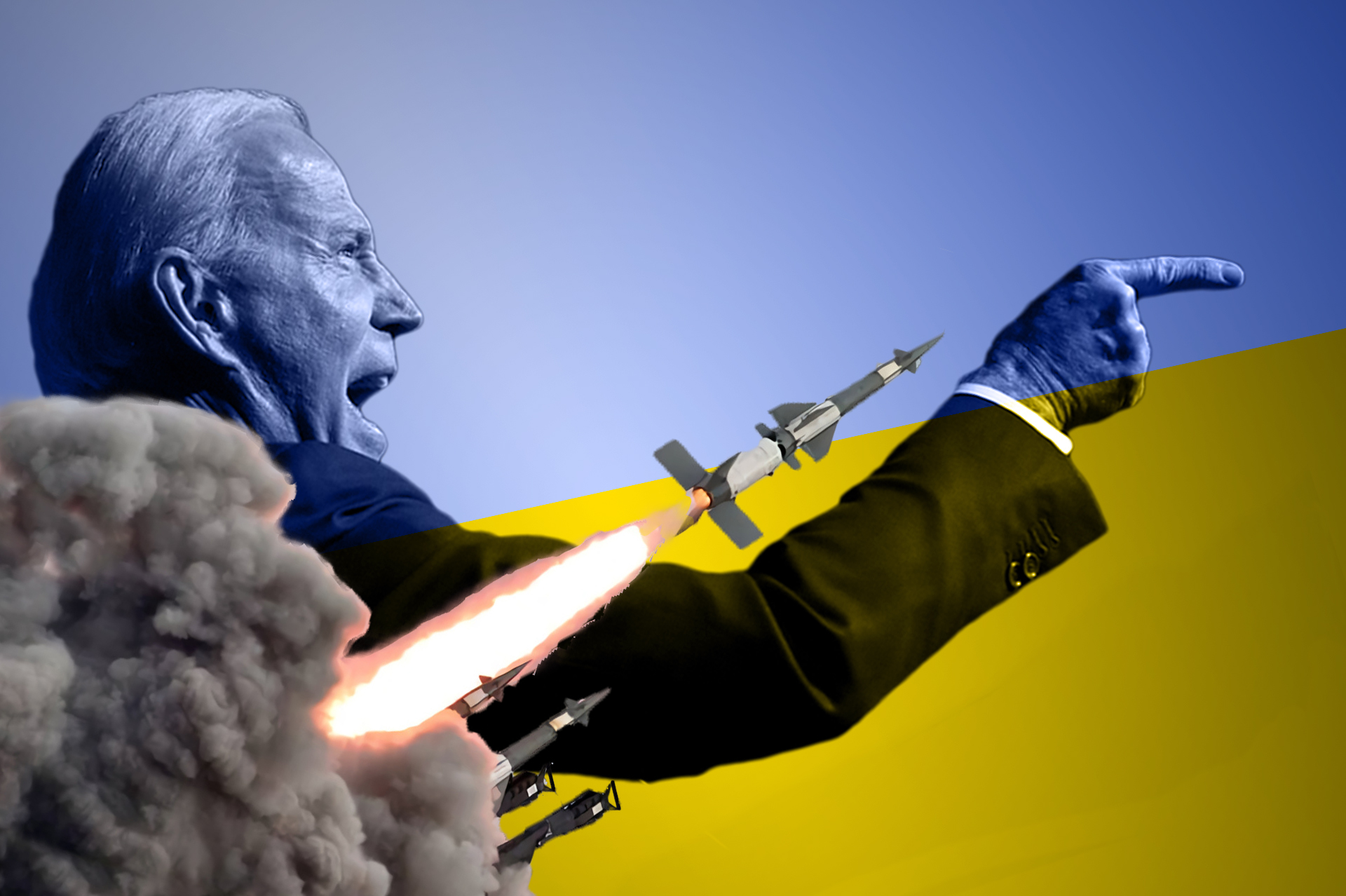 The West saw in this war a convenient division of labour: they would provide the weapons, the Ukrainians would provide cannon fodder. But western stocks are not able to keep up with the rate at which this war is consuming hardware and ammunition / Image: In Defence of Marxism
The West saw in this war a convenient division of labour: they would provide the weapons, the Ukrainians would provide cannon fodder. But western stocks are not able to keep up with the rate at which this war is consuming hardware and ammunition / Image: In Defence of Marxism
But the capacity of the West to provide ammunition at the rate it’s being consumed in this war has been found wanting. At the beginning of this year, it was estimated that the US could only produce around 100,000 shells per year, but Ukraine was using up around 6-7,000 per day. The lack of shells was openly admitted to in the US in order to justify the sending of cluster munitions, which are banned in over 100 countries. Private sector companies demanded billion-dollar handouts to resolve the situation, which, in the end, they received. In the meantime, the US has borrowed half a million shells from South Korea, and begged and borrowed from a number of other allies.
The whole saga around F-16s reveals another major weakness in Ukraine’s air defences. After 18 months of intense aerial bombardment, western stocks of ground-to-air missiles are running short. This threatens the Ukrainians’ ability to defend themselves against cruise missiles, drones and Russian aircraft. Up until this point, they have managed to deny Russia air superiority, but that is now being threatened. Hence, the number one priority at the next Ramstein-format meeting with the West will be air defences, the Ukrainian defence minister announced.
Although some of the supply of equipment will be forthcoming, the West will inevitably have to foot the bill. But western weapon systems are overpriced, precisely to guarantee superprofits for the industry. The bill for these arms, which is generously presented to the general public in the West, is therefore hefty, and it comes at the time when major cuts to bring down budget deficits loom.
As a result, the US is now talking about the Ukrainians having become “casualty averse”, as the New York Times puts it, and western generals complain that they prefer to spend ammunition rather than send soldiers to a certain death. Naturally, they are concerned that the next step would be for Ukraine to ask the West for further weapons deliveries, which western politicians are finding increasingly difficult to justify.
Their demands on the Ukrainian army expose the West for precisely how they have treated the Ukrainians throughout this war: as cannon fodder.
The Russian army
These problems aren’t confined to the Ukrainian side, but Russia, on account of the sheer size of the population, has been able to limit its exposure to the worst of these consequences. The irregular means of recruitment that the government adopted at the beginning of the war were aimed at preventing the consequences of the war being felt by the majority of the population.
Russia used its professional army, where tolerance for casualties is higher, and it used mercenaries, in the form of the Wagner Group. It heavily relied on the various impoverished nationalities inside Russia in Central Asia, including the Chechens. They have also enlisted the people of Luhansk and Donetsk to do much of the fighting. Finally, the Wagner mercenaries, and, recently, the army itself, has relied on convicts, who are released upon completion of a six-month contract.
Again, the descriptions from the Russian front are similar to those of the Ukrainian:
“Aleksandr claims that out of the 120 men in his unit, only about 40 remain alive. These survivors are being heavily pressured by the Russian military to remain on the battlefield at the end of their six-month contracts, according to Aleksandr and accounts provided to The New York Times from two other Russian inmates fighting on the front line.
“‘We are being sent to a slaughter,’ Aleksandr said in a series of audio messages from the Kherson region, referring to his commanders. ‘We are not human to them, because we are criminals.’”
The social and national divisions in the army are a cynical ploy to attempt to keep casualties contained to certain population groups. Now, Strana reports that Russia is conducting a campaign to add migrants who have recently received Russian citizenship to the rolls, preparing them for call up.
The Russian army in Ukraine is estimated by Strana at 500,000, whilst 20,000 more are being mobilised every month. This is a slightly slower rate than some months ago. If we are to believe the figures, it indicates that the Russian army, at least up until now, feels confident about its reserves. Another wave of mobilisation is being prepared, calling up another few hundred thousand men, but this will likely mean relieving a fair number already at the front. If they are planning a sizable increase in the numbers at the front, it will raise the stakes, both for Putin himself and for the war.
The fact that Putin has so far been able to avoid a real general mobilisation goes some way towards explaining the relative stability of Russia, as compared to Ukraine. Putin has done his best to insulate the population from the war, including the economic consequences. He has granted pension and minimum wage relief against inflation, and has granted subsidised mortgages in order to help the ailing housing sector. Soldiers are also being offered significant pay packets, often in excess of what they might have been paid in civilian jobs.
This attempt to shore up political stability also helps to explain Putin’s opposition to the hardliners in Russia, who have been demanding a full mobilisation.
The political consequences of the war in the West
But the economic consequences of the war are being felt in the West. The various sanctions and the cutting off of Russian gas are having a decisive impact on European inflation in particular. Governments have spent tens of billions of Euros trying to shield households and companies from the higher energy prices.
But this was done with borrowed money. And with higher interest rates putting more pressure on government finances, cuts are on the agenda.
The US has spent $113 billion already, and now Biden is asking for a further $24 billion. But he’s facing increasing resistance. Last month, a third of House Republicans voted to prohibit the administration from sending any more security assistance to Ukraine.
The failure of the counter-offensive is undermining support further. The Co-Chair of the Congressional Ukraine Caucus, Andy Harris, said in a meeting with his constituents: “I’m sorry, we don’t have that kind of money.” He had, up until this point, been a supporter of assistance.
“I think the time has come to realistically call for peace talks. I know President Zelenskyy doesn’t want it,” Harris told his town hall crowd. “But President Zelenskyy, without our help, he would abjectly lose the war. And with our help, he’s not winning. It’s a stalemate now.“
This is also reflected in opinion polls, which in early August indicated that 55 percent opposed further funding to Ukraine, rising to 71 percent among Republicans, who control the House of Representatives. Back in February 2022, 62 percent of Americans thought the US hadn’t done enough to support Ukraine, but this figure has now fallen to 48 percent.
Of course, the US has not run out of money in an absolute sense, and even the $113 billion only constitutes one tenth of the total budget deficit. However, the point is not so much the absolute numbers, but that cuts are on the agenda, and if they are to justify those cuts to healthcare, social security, etc., then politicians cannot be seen to be giving blank cheques to Ukraine.
The recent decision to send F-16s has provoked opposition among the far right in the Netherlands, who call the decision “madness”, accusing the government of taking the country to war. The (formerly Maoist) Dutch Socialist Party also complained about the move, although in a completely cowardly way. They stated that it should have been discussed in parliament first. After which, the transfer would presumably have received their support, or…? With such leadership from the left, it is no wonder the far right is making gains in Europe.
In Germany, opposition to supplying arms has been taken up by the AfD, who for all their reactionary politics, are at least straight-talking: that both Russia and Ukraine will emerge as losers from the war, and the only winner will be the US! One might add that it is not so much the oligarchs of Ukraine and Russia that will be the losers, as the workers of both countries who will pay the heaviest price. It is also not so clear that the overall balance for the US ruling class will be positive either. Nevertheless, the sentiment expressed by the AfD connects with the mood in Germany, particularly in the East.
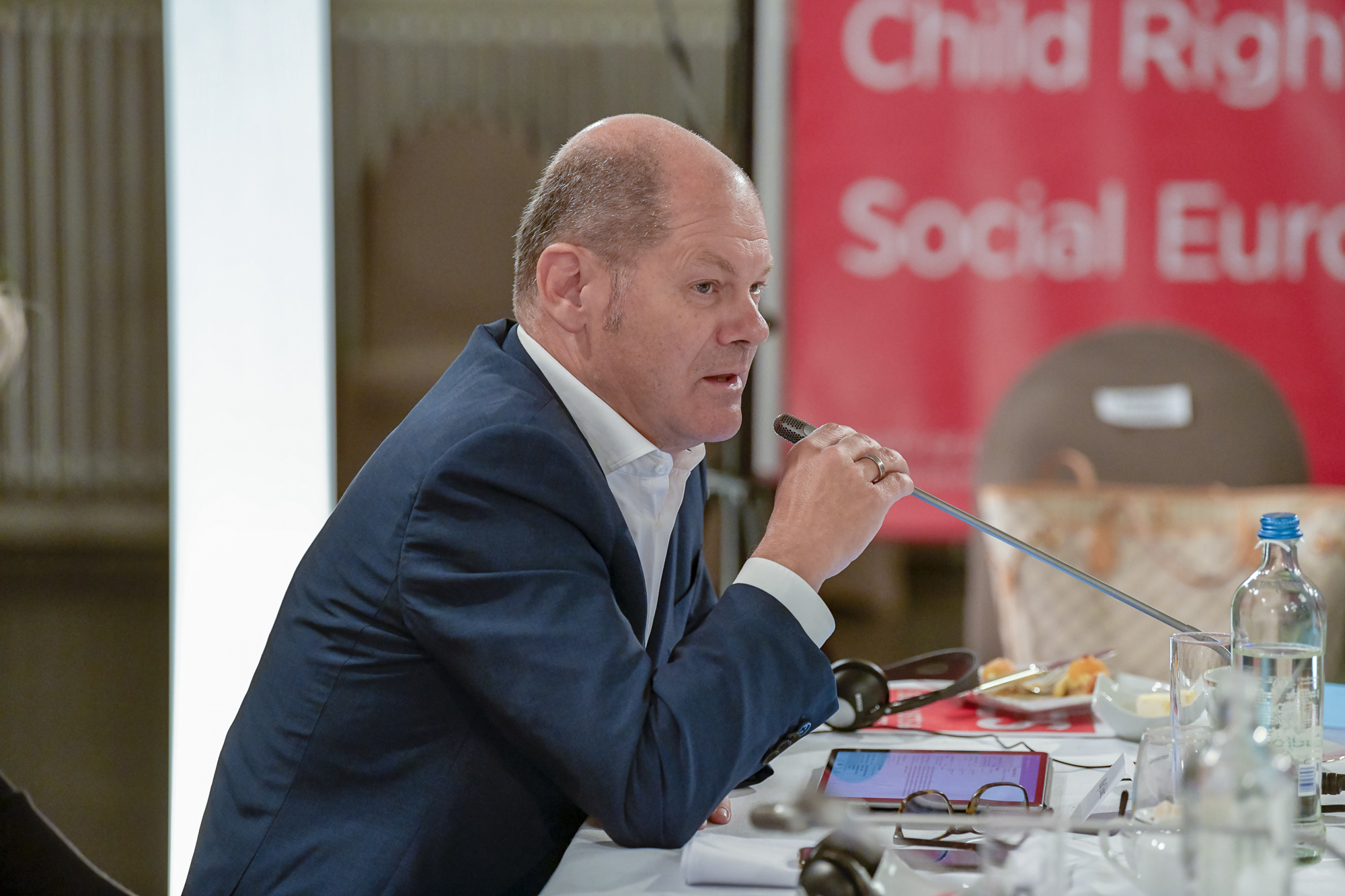 The war is having serious economic and political consequences for the West. German Chancellor Olaf Sholz is now languishing on 22 percentage points approval rating, whilst the right-wing AfD has soared on the basis of demagogic opposition to the war / Image: PES Communications, Flickr
The war is having serious economic and political consequences for the West. German Chancellor Olaf Sholz is now languishing on 22 percentage points approval rating, whilst the right-wing AfD has soared on the basis of demagogic opposition to the war / Image: PES Communications, Flickr
The party is riding a wave of opposition to Germany’s involvement. 52 percent of Germans opposed delivering Taurus missiles, with 36 percent in favour, according to an ARD poll. In East Germany, the percentage rises to 70 percent. AfD voters were the most opposed with 76 percent, whereas Greens and FDP voters were the most in favour (68 and 56 percent respectively). It is the ‘pacifist’ Greens who have become the most enthusiastic supporters of cruise missiles!
The most recent opinion polls give SPD Chancellor Olaf Scholtz an approval rating of 22 percent, making him the least popular leader among the G7. No doubt his recent austerity package did not help. Since the outbreak of the war, while the Greens and the SPD have together lost six points in the polls, the AfD has gained six points and has thereby overtaken the SPD as the country’s second party. The SPD has thus sacrificed itself on the altar of imperialism.
The failure of the counter-offensive is exacerbating all the political problems western leaders are facing at home, which is now pushing them in the direction of negotiations.
To negotiate or not to negotiate?
This is not the first time that the question of negotiations has been raised. Before the war began, Russia offered to negotiate in return for security guarantees (such as ruling out Ukraine ever joining NATO). At that time, Biden insisted that such a question was non-negotiable. The West would defend Ukraine’s right to join NATO. Although, of course, Ukraine can’t actually join NATO.
In a particularly candid interview with Le Figaro, Nicolas Sarkozy, the former French president, criticised the West for having dangled the question of EU membership in front of the Ukrainians. It was at best “disingenuous”, he said: “We are selling fallacious promises that will not be held.”
Of course, he was widely condemned by all kinds of hypocrites and hawks. He was, however, telling the truth. The EU can’t absorb Ukraine because it would break the entire financing of the bloc, and it would create another stream of migration into the EU, which is the last thing that the EU leaders want. Sure, they can get a free trade agreement. Maybe even some aid to keep the country from collapsing completely. But no one actually wants to admit them as a member.
The same goes for NATO membership. Ukraine can’t join as long as it has a border dispute. This is not just a question of empty formalities. The entry of Ukraine without resolving the conflict with Russia would openly drag the whole of NATO into the conflict. This would raise the spectre of nuclear war, and is not what the West is interested in at all. Washington’s whole plan was, on the contrary, to let the Ukrainians do the fighting and dying, not the West.
In defending himself against the right wing of the Republican Party, Senate Republican Leader, Mitch McConnell, let the cat out of the bag when it came to some of the aims of the US in this conflict:
“As I’ve said repeatedly, sending lethal western capabilities to the front lines has been a direct investment in America’s own security in a number of concrete ways.
“First, equipping our friends on the front lines to defend themselves is a far cheaper way – in both dollars and American lives – to degrade Russia’s ability to threaten the United States.
“Second, Ukraine’s effective defense of its territory is teaching us lessons about how to improve the defenses of partners who are threatened by China. It is no surprise that senior officials from Taiwan are so supportive of efforts to help Ukraine defeat Russia.
“Third, most of the money that’s been appropriated for Ukraine security assistance doesn’t actually go to Ukraine. It gets invested in American defense manufacturing. It funds new weapons and munitions for the U.S. armed forces to replace the older material we have provided to Ukraine.”
So, the US is looking to bleed Russia, learn some lessons for a potential war with China, use up some old ammunition, and garner an excuse for another arms race. And while Mitch McConnell doesn’t blurt it out, the US also has another war aim: to force Germany to break off its economic reliance on Russia. At no point was the aim to get dragged into the fighting itself. Quite the contrary.
The question has also been posed of returning Ukraine to its 1991 borders, or even its 2021 borders. But that is now out of the question given that the offensive has failed, a foreseeable result once it was clear that the Russian army had dug in with an additional 200-300,000 soldiers compared to a year ago. Western arms supplies could not make up the difference.
But had this war simply been about ‘sovereignty’ and ‘defending Ukrainian territory’ as is claimed, and not about degrading “Russia’s ability to threaten the United States”, as McConnell put it, then the fighting of the last year would make very little sense. In April last year, Ukraine and Russia had actually come to a tentative agreement, according to Foreign Affairs:
“Russia would withdraw to its position on February 23, when it controlled part of the Donbas region and all of Crimea, and in exchange, Ukraine would promise not to seek NATO membership and instead receive security guarantees from a number of countries.”
This would have given Kherson and possibly even Mariupol back to Ukraine. But the war was never about that. Boris Johnson, on behalf of Biden no doubt, rushed in to scupper the agreement, promising massive western support for Ukraine. Clearly, at that time, the US and its British lapdogs were not yet ready to bring the fighting to an end.
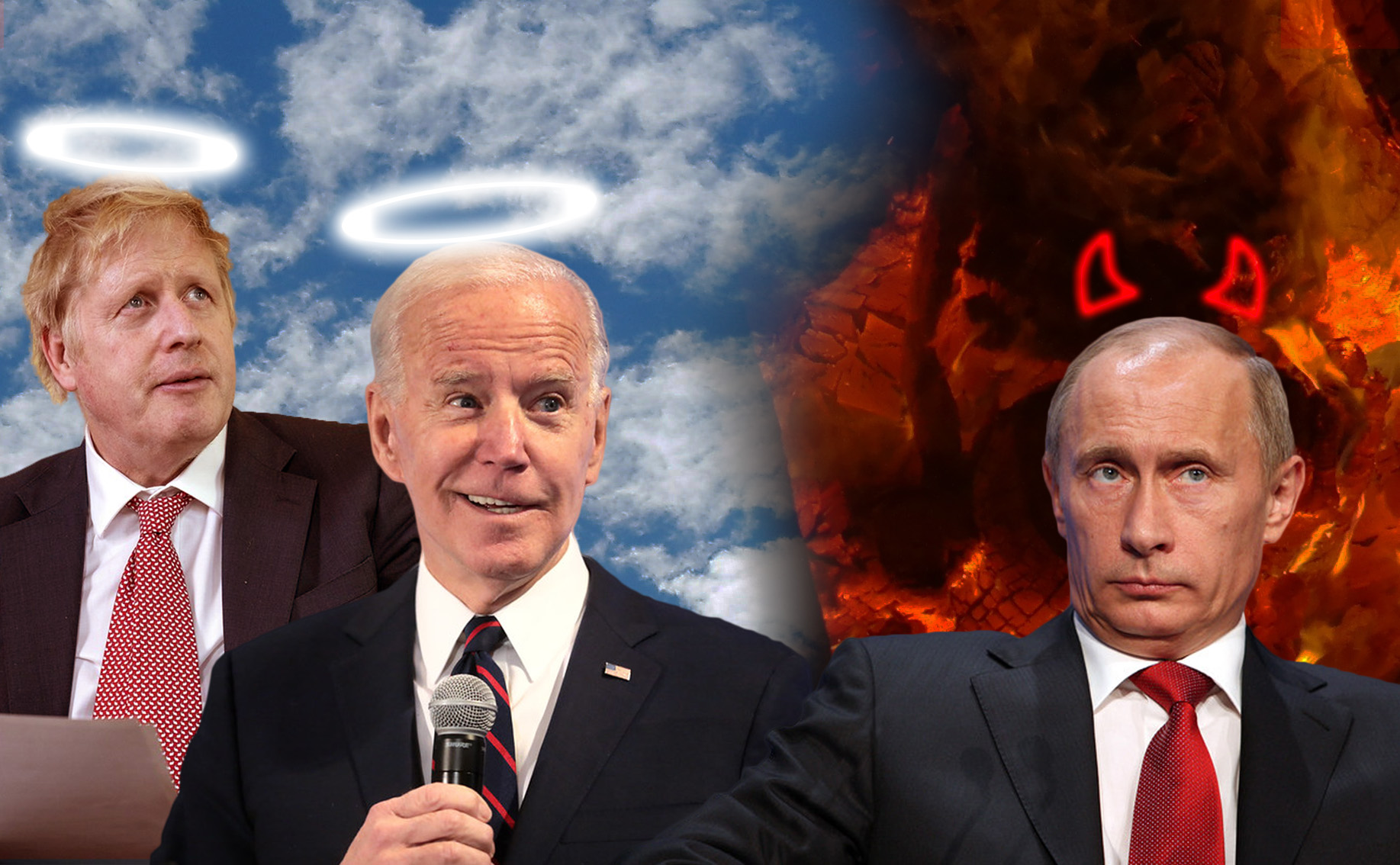 Last April, there were indications that Russia and Ukraine might make a deal. However, Boris Johnson then rushed to Kyiv to pressure Zelensky to cease negotiations in order to drag out this war / Image: own work
Last April, there were indications that Russia and Ukraine might make a deal. However, Boris Johnson then rushed to Kyiv to pressure Zelensky to cease negotiations in order to drag out this war / Image: own work
After the loss of a further 50,000 to 100,000 lives, they are now pushing the Ukrainians into a deal – one on much worse terms. Now there are rumours that Zelensky is attempting to hold elections, in order to give himself a mandate to sign a deal with the Russians, before his ratings collapse.
Even the NATO General Secretary’s Chief of Staff has suggested Ukraine gives up territory in return for NATO membership. This naturally provoked an angry response from Kiev, and the official had to apologise. But it reveals what the West is considering in private.
It remains to be seen whether the Russians will be willing to come to the negotiating table at this time. No doubt, it will depend on the terms on offer. The Russian army is starting to make fairly noisy preparations for an offensive of its own. This may be a useful bargaining chip. The dynamics of the situation are such that Russia is much better placed to play the long game.
Ordinary Ukrainians have had to pay a very high price for this war, and will continue to pay a heavy price for decades. Their anger will come to be directed against the Ukrainian oligarchs and politicians responsible for allowing their country to become a staging ground for an inter-imperialist conflict.
No wonder the Ukrainian government is complaining about the lack of western arms supplies. While somewhat justifiably aggrieved that all the arms promised weren’t forthcoming, they also need someone to blame. The leaders in the West, in particular the US, can observe the fallout from a safe distance, a luxury not afforded to Zelensky.
The West in turn is gearing up to blame the Ukrainians. As noted, they have already criticised them for not being sufficiently willing to throw themselves into Russian artillery fire. Doubtless the West will say they were too corrupt; too unrealistic, etc. They’ll throw some mud and see what sticks in order to prepare public opinion for a retreat.
While they maintain an increasingly half-hearted pretence of backing Ukraine unto victory, it is clear that the West thinks the time for negotiations is approaching. What would be the terms that would come out of such a negotiation? Russia will now be asking for more stringent terms than before. But even if the Ukrainians manage to return to the status quo before the war, which seems highly optimistic, it would now be with the addition of hundreds of billions of debt, the loss of tens of thousands of homes, the loss of industries, of infrastructure and tens of thousands of lives. Ukraine was already one of the poorest countries in Europe, devastated by the restoration of capitalism in the 1990s. This war has brought yet another disaster upon the population.
The terms of any deal will undoubtedly present the workers of Russia, Ukraine and the West with another hefty bill, without resolving any of the questions that led to the war.
The workers in the West will foot the bill for the arms sent to Ukraine during the war, some part of the reconstruction, and a new arms race. If the West gets its way, the remaining state-owned assets in Ukraine would be looted, and the government saddled with a debt which would take generations to repay. And of course in Russia, once the dust settles, the army will need to have its stockpiles replenished to prepare to fight another war, and to develop new generations of weapons in the arms race. Any peace will, in other words, not look so much like peace at all, but merely preparations for more confrontations.
Far from being a battle over “sovereignty” or “against Russian aggression”, this war is a proxy war between the West and Russia. It is a result of the increasing contradictions between the imperialist powers. As with protectionism and sanctions, this war is simply a reflection of the struggle between them. It is another senseless war fought to defend the interest of the banks and the multinationals, with the workers and the poor paying the price.
With tragic and predictable results, capitalism and its companion imperialism stand once again exposed in their naked brutality. The utter cynicism of the leaders of the imperialist nations have been revealed for all to see. But this does not lead us to despair over the state of the world, it merely strengthens our resolve to put this dying system out of its misery.

